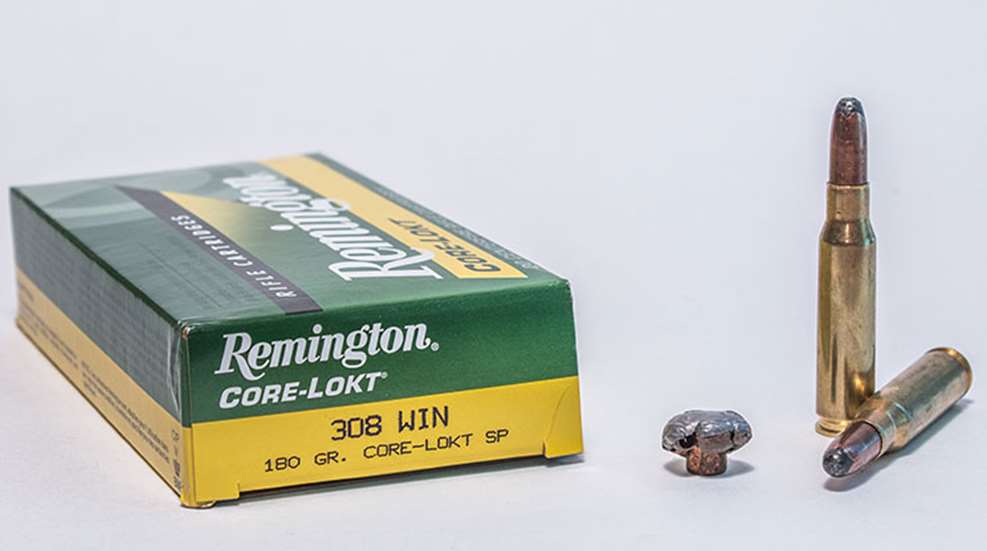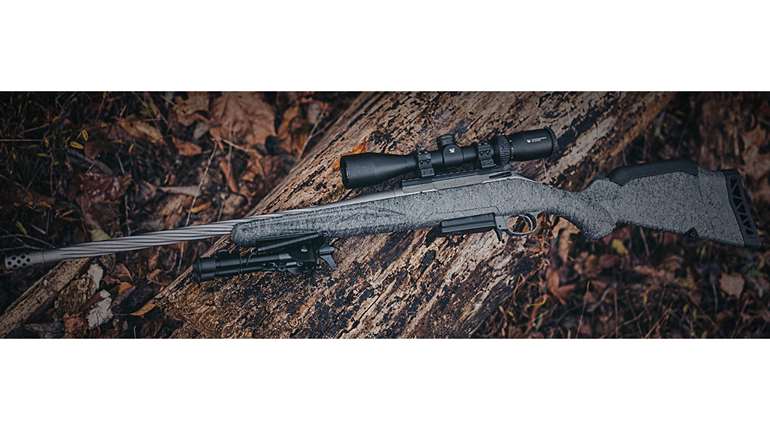
In 1939 Yankees won the World Series, The Bismarck took to the sea, Oregon was crowned the first NCAA Basketball Champions and the cost of a First Class stamp was three cents. The .308 Win. had not been invented yet, and it would be 23 more years before anyone heard of the Remington Model 700. However, 1939 was the year Remington would change hunting history with the introduction of the Core-Lokt.
By devising a new method to lock a lead alloy core to a gilding metal jacket, Remington created the bullet that has probably killed more big game than any other. Tapering the jacket and creating an hourglass shaped internal cavity accomplishes this lock and, as the bullet deforms or crushes during penetration, the front of the jacket and the core peel back and erode. The tapered jacket stops deformation and you have the original controlled expansion bullet. The Core-Lokt is often called the deadliest mushroom in the woods.
 This particular bullet building technology is old—but that also means it's not expensive. Core-Lokt ammunition remains among the most affordable you can buy. Some would argue that’s why it’s so popular...but big-game hunters are a demanding lot; if a bullet did not work they would not continue to use it. I’ve taken whitetails from West Virginia to Saskatchewan with Core-Lokts and they put deer down fast.
This particular bullet building technology is old—but that also means it's not expensive. Core-Lokt ammunition remains among the most affordable you can buy. Some would argue that’s why it’s so popular...but big-game hunters are a demanding lot; if a bullet did not work they would not continue to use it. I’ve taken whitetails from West Virginia to Saskatchewan with Core-Lokts and they put deer down fast.
The reason they are so effective at dropping deer is because of the amount of energy they deposit. Core-Lokts typically transfer 75 percent of their kinetic energy within the first eight inches of penetration. This translates to massive tissue destruction as well as lots of shock to the animal’s system. Hit properly with a Core-Lokt, you can expect deer to drop. They might get up and run, but they won’t run far.
The mistake many hunters make is to assume the Core-Lokt is just a deer bullet. While testing Core-Lokts out of the .270 Win., 7mm Rem. Mag., .30-30 Win., .308 Win., .30-06 Sprg. and the .338 Win. Mag. in 10 percent ordnance gelatin, I found the average penetration depth to be 20 inches and the average retained weight to be 75 percent. Most impressive was expansion, which averaged 1.9 times the original diameter. This is big game busting performance regardless of the species, or where it lives.
16 years ago I climbed the mountain in front of our West Virginia hunting camp at dawn. It was well-digger cold. As the sky turned orange with the hope of warmth, a doe burst from the thicket to my front. On her tail was the biggest whitetail deer I’d ever seen in West Virginia. I shouldered my Remington Model Seven and, as I tracked the buck in the scope, my last thought was, Core-Lokt don’t fail me now.
It didn’t.



































